 Image search results - "iriomote" Image search results - "iriomote" |

Iriomote Wildlife Conservation Center is a great place to learn about the island's wildlife. There are some English captions too.
|
|

Inside Iriomote Wildlife Conservation Center. One floor full of panel exhibits and stuffed specimens.
|
|

About the Iriomote Wildlife Conservation Center.
|
|

Iriomote map shows where the Iriomote wildcat was sighted (orange tags with date and time) and roadkill locations (red tags). People need to drive carefully.If you see an injured or dead Iriomote wildcat, call 0980-85-5581.
|
|

About Iriomote's wildlife.
|
|
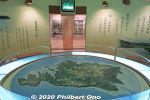
Map of Iriomote.
|
|

Iriomote with the main town of Ohara on the lower right.
|
|

The center's main exhibit is the stuffed Iriomote wildcats.
|
|

Iriomote is famous for the Iriomote wildcat (イリオモテ ヤマネコ). Endemic to Iriomote and critically endangered.
|
|

Only 100 or so left on the island. They are nocturnal and have stubby legs and a thick tail. Discovered relatively recently in 1965.
|
|

There's no zoo, etc., where we can see a live Iriomote cat. They only have stuffed Iriomote cats here at the Iriomote Wildlife Conservation Center.
|
|

In the past, they did have a live Iriomote cat here, found injured on the road and treated here.
|
|

Characteristics of the Iriomote wildcat.
|
|

Characteristics of the Iriomote wildcat.
|
|

Even though the Iriomote cat is all over Iriomote as a tourist symbol, we can't see any live ones.
|
|
|

Life cycle of Iriomote wildcat.
|
|

Skeleton of Iriomote wildcat.
|
|

Roadkill of Iriomote cats is a problem especially since they are nocturnal and Iriomote roads are dark. Residents are told to drive slowly at night.
|
|
|
|
|

Iriomote's birds.
|
|

Turtle on Iriomote.
|
|

Bats on Iriomote.
|
|

Bats on Iriomote.
|
|

About habu snakes (venomous).
|
|

Times for sunrise, sunset, moon rise/set, and high/low tide on Iriomote in Oct.
|
|

Stuffed toy Iriomote wildcat.
|
|

Mouth of Maira River (マイラ川) before sunrise, short drive from the main town of Ohara. Sunrise was about 6:50 am.
|
|

There was this dock where we could get on our kayaks. Maira River, Iriomote.
|
|

Off we go. The water was shallow, but we still wore lifejackets.
|
|

We were on time for the sunrise.
|
|
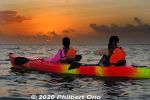
A few clouds, but the sunrise was getting to be nice.
|
|

We anchored to watch the sunrise.
|
|
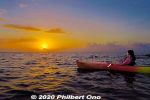
Sunrise kayaking on Iriomote, Yaeyama, Okinawa.
|
|

Sunrise kayaking on Iriomote, Yaeyama, Okinawa.
|
|

Sunrise kayaking on Iriomote, Yaeyama, Okinawa.
|
|

Iriomote sunrise at Maira River.
|
|

Our guide was Harubaru, but he doesn't normally do sunrise kayaking unless you ask him to: http://harubaru-iriomote.okinawa/course/
|
|
|

After the sunrise, we paddled along the mangroves on the river's edge.
|
|

After the sunrise, we paddled along the mangroves on the river's edge.
|
|

Maira River lined with mangroves.
|
|

Lovely morning, too bad we didn't have time to kayak more upstream on Maira River, Iriomote.
|
|

Mouth of Maira River at high tide. The brackish water is quite shallow, no more than 1 or 2 feet deep.
|
|

Mouth of Maira River at low tide when we passed by the day before.
|
|

Mouth of Maira River at low tide when we passed by the day before.
|
|

Maira River, Iriomote.
|
|

Maira River, Iriomote. There's a waterfall upstream, but we didn't have time.
|
|

Ohara Port is Iriomote's main port and gateway. Boats from Ishigaki run to Ohara quite frequently. Iriomote has another port up north, but rough waters in winter can cancel boat runs.
|
|

Approaching Ohara Port. Although its official name is "Nakama Port" (仲間港), nobody calls it that.
|
|

Ohara Port, Iriomote. One floating dock.
|
|

Ohara Port dock.
|
|

Ohara Port dock built in 2002 after moving from the old location.
|
|
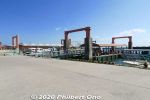
Ohara Port dock.
|
|

Tourist signs at Ohara Port.
|
|
|
|

Ohara Port's passenger terminal is nicknamed "Nakamarin." Built in 2002 after moving from the old location. This is the main entrance from the street.
|
|

Inside Ohara Port's passenger terminal nicknamed "Nakamarin." It has a gift shop. This building got flooded by typhoons twice in 2005 and once in 2009.
|
|

Ticket counter inside Ohara Port's passenger terminal.
|
|

Departure times for boats going to Ishigaki.
|
|

Welcome sign.
|
|

Boat ticket for Ishigaki Port.
|
|

Tourists arriving Ohara Port.
|
|

Local tour guides, car rentals, etc., try to attract the attention of arriving tourists at Ohara Port.
|
|

Anei Kanko high-speed boat named "Paijima" for 181 passengers. We rode this boat from Ohara, Iriomote back to Ishigaki Port. ぱいじま
|
|

Anei Kanko high-speed boat named "Paijima" for 181 passengers. We rode this boat from Ohara, Iriomote back to Ishigaki Port. ぱいじま
|
|

On board Anei Kanko's high-speed boat "Paijima" for Ishigaki Port. The front of the passenger cabin has a space for luggage. ぱいじま
|
|

On board Anei Kanko's high-speed boat "Paijima" for Ishigaki Port. ぱいじま
|
|

Pretty smooth ride.
|
|

Beautiful ocean between Iriomote and Ishigaki, part of the national park.
|
|

Site of the old Ohara Port near the new one. The old port operated here until 2002.
|
|

The old Ohara Port when it was still operating. Tour buses, taxis, etc., await arriving passengers.
|
|

Southern Cross No. 5 boat at the old Ohara Port.
|
|

The old Ohara Port, Iriomote.
|
|
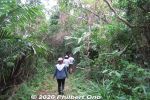
Iriomote has many hiking trails through the tropical forest or jungle. The popular trails usually lead to a waterfall, but we went on a short nature trail in Otomi that didn't lead to anything. 大富林道大正池
|
|

Iriomote's forests are a mishmash of all kinds of flora growing wild everywhere in all directions. It's not like the neat, orderly forests of trees on mainland Japan. 大富林道大正池
|
|
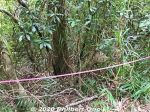
Beehive roped off. (Do not disturb.)
|
|
|

Ferns
|
|

Tree fern, common in Okinawa. The fronds break off. 木生シダ
|
|

The trunk of a tree fern shows the remains of branches that broke off. 木生シダ
|
|

Bird feeder for research purposes.
|
|

When going on hikes, best to wear long sleeves and long pants so the tree branches, leaves, etc., don't scratch you. Also protection from bugs.
|
|

Guided tours are recommended. Local guides know the flora and fauna and the difficult or slightly hazardous sections of hiking trails. Local tour guide: https://www.motti-iriomotejima.com/
|
|

Otomi Lookout Deck 大富展望台
|
|

Otomi Lookout Deck 大富展望台
|
|
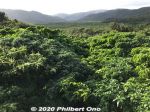
Great views of the greenery from the Otomi Lookout Deck.
|
|
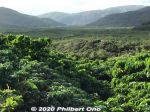
Nakama River is beyond this area.
|
|

Great views of the greenery from the Otomi Lookout Deck.
|
|

Great views of the greenery from the Otomi Lookout Deck.
|
|

Map of the boardwalk going through the Sakishima suounoki mangroves in the Komi district. Near the mouth of Maira River. サキシマスオウノキ (古見)
|
|

Boardwalk at Sakishima suounoki mangroves in the Komi area. サキシマスオウノキ (古見)
|
|

These mangroves are a National Natural Monument.
|
|
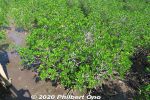
Sakishima suounoki mangroves, Iriomote. サキシマスオウノキ (古見)
|
|
|

Sakishima suounoki mangroves, Iriomote. サキシマスオウノキ (古見)
|
|

Boardwalk at Sakishima suounoki mangroves in the Komi area. サキシマスオウノキ (古見)
|
|
|
|

Low tide puddles.
|
|
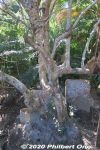
An exotic plant on Iriomote called "looking-glass mangrove" (Sakishima suounoki) with huge roots that look like a byobu folding screen. (サキシマスオウノキ 先島蘇芳木 Heritiera littoralis)
|
|

In the old days, part of the root was used as a rudder on Okinawan sabani fishing boats. (サキシマスオウノキ 先島蘇芳木 Heritiera littoralis)
|
|

Different plant growing on a branch of this looking-glass mangrove.
|
|
|
|
|

Mangrove seedling.
|
|

Ishigaki cattle/beef.
|
|

Iriomote cattle/beef.
|
|

Entrance to Takemori Inn/Ryokan (竹盛旅館) in Otomi, where we stayed for a night. Photo by Kinjo Toru. https://www.takemori-inn.net/Map: https://goo.gl/maps/pG9zEMWQ1Zozys1x5
|
|

Okinawan welcome sign at Takemori Inn/Ryokan (竹盛旅館).
|
|

My Japanese-style room at Takemori Inn on Iriomote. Nice two-room suite.
|
|

My Japanese-style room at Takemori Inn on Iriomote.
|
|

Outside my room at Takemori Inn on Iriomote. View of the bridge to Ohara across Nakama River.
|
|

Outside my room at Takemori Ryokan on Iriomote.
|
|

Modern bathroom at Takemori Ryokan on Iriomote.
|
|
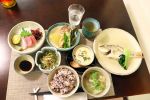
Dinner at Takemori Inn. Chawan-mushi, local fish, Yaeyama soba. The ryokan owner was very friendly. Not English-speaking though.茶碗蒸し、海藻と野菜和え、近海魚の刺身、近海魚の塩煮、煮物(冬瓜)、ソーキ、昆布、こんにゃく、黒紫米入り西表産ひとめぼれごはん、八重山そば
|
|

White powder-puff flowers or sagari-bana in Japanese (サガリバナ) and a small moth. There are pink ones too. During summer, they bloom for only one night, then the flowers fall off the next morning. It was early Nov. (still warm), so maybe we got lucky to see it.
|
|

Stargazing amid sugar cane in Mare district, Iriomote. (マーレ地区)
|
|

Stargazing amid sugar cane in Mare district, Iriomote. (マーレ地区)
|
|

Orion constellation above Iriomote.
|
|

Stargazing amid sugar cane in Mare district, Iriomote. (マーレ地区)
|
|

Almost full moon above Iriomote.
|
|
|
|
|

Delicious Okinawan breakfast at Takemori Inn/Ryokan (竹盛旅館).
|
|

On Iriomote, one convenient way to tour the island is go on a sightseeing tour by bus. They pick you up when you arrive at the port and take you to the major sights like Urauchi River and Yubu.You can book a tour from Ishigaki.
|
|

On the tour bus on Iriomote going north. Lots of sugar cane.
|
|

Northern Iriomote has Okinawa and Iriomote's longest river, Urauchi River (18 km). It's a popular tourist route to go on the jungle cruise, then hike through the forest to see two waterfalls on the river.Near Urauchi-hashi Bridge at the mouth of the river, there's a boat dock for Urauchi jungle river cruises. Since the hiking trail is rocky or muddy, don't wear high heels or slippers. Wear sneakers or hiking shoes. Although there's a restroom along the hiking trail, it's not as clean as you would like. Better to use the toilet at the boat dock before the cruise. Also bring something to drink. The roundtrip cruise and hike will take about 3 hours. Map here
|
|

Boat dock at Urauchi River on Iriomote. If you come on your own, the jungle river cruise is ¥1,800 for adults. 西表島・浦内川The boat cruise takes about 30 min. to a dock upstream where you get off for the waterfall hike. Boats depart here once or twice an hour from morning to early afternoon.
|
|

In northern Iriomote, Urauchi River is Okinawa's longest (19 km), widest (200 m), and deepest (15 m) river. It's home to a whopping 400 species of fish or 10 percent of Japan's fish species.Over 20 fish species are endangered. Urauchi River is within Iriomote-Ishigaki National Park. Both sides of the river are lush with mangroves and forests. 西表国立公園
|
|

The boat operator narrates the sights along the river. There are even signs indicating the flora. This sign indicates a mangrove species called "me-hirugi" (メヒルギ) in Japanese or Kandelia obovata growing in brackish water.It has white, star-shaped flowers.
|
|

Urauchi River is fed by the runoff from Iriomote's central mountains. Urauchi River jungle cruise is about 30 min. or 8 km upstream to another boat dock called Gunkan-iwa. 西表島・浦内川
|
|

Wish we could see the Iriomote wildcat swimming across the river, but they are nocturnal.
|
|

Ferns and tree ferns also grow at upstream. シダ類
|
|

Another Urauchi River cruise boat. 西表島・浦内川 遊覧ボート
|
|

We got off the boat upstream here at Gunkan-iwa, named after a rock slab looking like the side of a battleship. 軍艦岩
|
|

At Gunkan-iwa dock, there's a hiking trail called Urauchigawa Shizen Kenkyu-ro. A nature trail that goes to two waterfalls.Note that cell phones won't work on the hiking trail. 浦内川自然研究路
|
|

Urauchi River hiking trail to waterfalls. It can be quite muddy.
|
|

Sometimes there are views from the hiking trail.
|
|

Lush forest, but rocky and muddy trail. Hiking shoes or sneakers are good. Sometimes a tree or branch has fallen over the trail. Need to go over/under it.
|
|

Ferns and a nameless mini waterfall.
|
|

After hiking about 30 min., a scenic point gives a view of Mariyudu Falls. Series of three waterfalls. It empties into a round stream pool. "Mariyudu" means stream pool. マリゥドゥの滝
|
|

Mariyudu Falls on Urauchi River. About 20 meters wide and 16-meter drop in total. One of Japan's 100 Famous Waterfalls. マリゥドゥの滝*People can no longer come this close to the falls. There were people who slipped and fell in, so the closeup path is blocked.
|
|

Behind Mariyudu Falls looking from upstream.
|
|

Mariyudu Falls. From here, the hiking trail continues to another waterfall, Kanbire (Kanpire) Falls about 250 meters away.
|
|

Kanbire (Kanpire) Falls on Urauchi River, near the center of Iriomote. This is about 2 km from the Gunkan-iwa boat dock. Or 30-40-min. hike. You can get quite close to the falls. カンビレーの滝Instead of having one big drop, Kanbire Falls flow down on a series of steps on the river for about 200 meters. The riverside also has small potholes. Kanbire (Kanpire) means "where gods sit." This spot was considered to be a sacred site where the gods gathered.
|
|

Hiking back. The lady in front of me was wearing rubber slippers on this muddy trail. She kept slipping and almost falling. Her dainty feet got all muddy.
|
|

River cruise back to the dock.
|
|

Urauchi River boat dock as seen from Urauchi Bridge near the mouth of the river.
|
|
|

Mangroves near the mouth of Urauchi River, seen from Urauchi Bridge.
|
|

Bus stop (Urauchihashi) for the Urauchi River boat dock. In the background is our tour bus.
|
|

On the northern tip of Iriomote is scenic Hoshi-suna Beach. Famous for star-shaped sand grains, but hard to find. 西表 星砂の浜Map here
|
|

Iriomote Hoshisuna Beach.
|
|

Iriomote Hoshizuna Beach.
|
|

Northern Iriomote coast.
|
|

Yubu is a small, sandbar island near Mihara, Iriomote. They converted the island into a lush botanical garden.
|
|

We ride these water buffalo carts to the island across shallow water.
|
|

Water buffalo carts coming back from Yubu.
|
|

The cart is driven by a guide who usually plays the sanshin for passengers as the water buffalo sloshes to the island.
|
|

The water buffalo all have names and are highly trained to put on the harness by itself. They originally came from Taiwan.
|
|
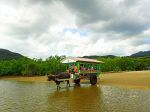
Our water buffalo's name was Musashi. (Photo by tour guide motti.)
|
|

Gentle water buffalo knows the direction. Photo by Kinjo Toru.
|
|

Water buffalo taking tourists to Yubu Island from Iriomote.
|
|

Water buffalo cart ride (水牛車 suigyusha) from Mihara (美原) to Yubu island (Yubu-jima 由 布島) takes 15 min.*Water buffalo cart roundtrip and Yubu island admission for adults: ¥1,760, Children (elementary school and below): ¥880 https://yubujima.com/
|
|

Water buffalo taking toursts to Yubu Island from Iriomote.
|
|

On the water buffalo cart to Yubu Island from Iriomote. The guide also played the sanshin. (Photo by tour guide motti.)
|
|

Water buffalo walks through shallow water to Yubu Island from Iriomote. (Photo by tour guide motti.)
|
|

Also possible to walk over to Yubu and not pay for the water buffalo ride, but no one does this.
|
|

Water buffalo footprints.
|
|

Water buffalo hoof prints.
|
|

Yubu arrival station. (Admission charged, included in the water buffalo cart ride.) https://yubujima.com/
|
|

Map of Yubu sights and attractions.
|
|

Water Buffalo Pond (水牛の池) on Yubu.
|
|

Water buffalo pond on Yubu.
|
|

Yubu is a very lush, green island.
|
|
|
|
|

Lots of tropical flowers on Yubu Island, especially hibiscus.
|
|

Red hibiscus
|
|
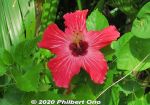
Red hibiscus
|
|

Red hibiscus
|
|

Bougainvillea on Yubu, in bloom year round.
|
|

Way to butterfly hothouse (蝶々園).
|
|
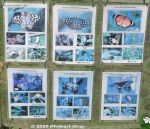
Kinds of butterflies in the butterfly garden (蝶々園). It's a greehouse full of flowers and plants, so it's quite warm.
|
|

Inside the butterfly garden (蝶々園) on Yubu. (Photo by tour guide motti.)
|
|

Common tiger butterfly (from India) or Danaus genutia. Looks like the monarch butterfly common in Hawaii. スジグロカバマダラ Butterfly hothouse in Yubu (蝶々園).
|
|

About the common tiger butterfly or Danaus genutia. スジグロカバマダラ Butterfly hothouse in Yubu (蝶々園).
|
|

Large tree nymph (Ogomadara), Japan's largest butterfly. Wingspan 95mm or more. Very eye-catching and elegant glider. オオゴマダラ(大胡麻斑) Butterfly hothouse in Yubu (蝶々園).
|
|

There's a restaurant on Yubu.
|
|

Inside the restaurant on Yubu
|
|

Lunch was named, "Okinawa Makunouchi Bento Akabana" (沖縄幕の内弁当「アカバナ」. ("Akabana" means "hibiscus" in Okinawan.) Price was ¥1,320.Iriomote black rice, champuru, brown sugar yokan: 西表産黒紫米入りごはん、アーサのお吸い物、うみぶどう、ミミガー、漬物、沖縄黒糖煮、 アンダー味噌、野菜天ぷら、ウムクジ(紅イモを米粉であえて揚げたもの)、かまぼこ、チャンプ ルー、黒糖羊羹
|
|

Our Okinawan lunch (Makunouchi Bento Akabana). Very good.
|
|

Gift shop inside the restaurant. The Iriomote Wildcat is used as a tourist smbol everywhere, but we can never see the real cat.
|
|
|
|

Manta Beach on Yubu. マンタの浜
|
|

Manta Beach on Yubu. マンタの浜
|
|

Manta Beach on Yubu. マンタの浜
|
|

A nice cafe at Manta Beach on Yubu. マンタの浜
|
|

A nice cafe at Manta Beach on Yubu.
|
|

A nice cafe at Manta Beach on Yubu. Sit on old water buffalo carts.
|
|

Having tea or ice cream on an old water buffalo cart. (Photo by tour guide motti.)
|
|

Having tea or ice cream on an old water buffalo cart. (Photo by tour guide motti.)
|
|

Old elementary and jr. high school on Yubu.
|
|

Lots of water buffalo monuments and sculptures on Yubu.
|
|
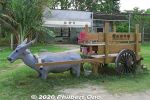
Lots of water buffalo monuments and sculptures on Yubu.
|
|

Lots of water buffalo sculptures on Yubu.
|
|

Water Buffalo Monument
|
|
|

Hibiscus
|
|
|
|

Iriomote across the shallow water.
|
|

Iriomote mangroves.
|
|

Iriomote mangroves.
|
|
|
|